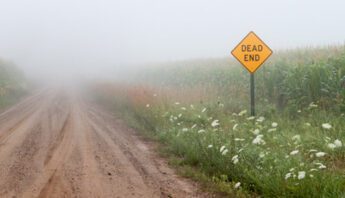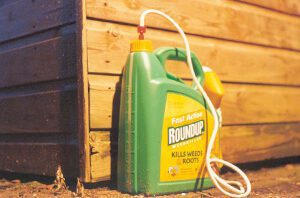In Alaska, our railroad lines traverse hundreds of salmon streams and wetlands, drinking water sources, berry-picking areas, farms and neighborhoods.
After more than 30 years of controlling vegetation without chemicals, the Alaska Railroad Corporation is now looking to apply a toxic herbicide mixture along 122 miles of railroad between Anchorage and Fairbanks. We at Alaska Community Action on Toxics (ACAT) are doing all we can to stop this shift.
As a biologist and long-time Alaska resident, I am deeply disturbed that our state regulators might allow the railroad corporation to apply poisons to control weeds, when there are plenty of safe alternatives.
ACAT fully supports the railroad in its efforts to maintain safe operations, but the use of herbicides does not provide an effective or economical solution. And it’s simply not needed. There are viable, economical alternatives that preclude the need for chemical treatments.
Evidence of harm
The railroad’s assertion that the herbicide mixture is safe for application in and around waterways flies in the face of peer-reviewed science that increasingly demonstrates the potential human health harms of glyphosate, the active ingredient in the herbicide mixture Aquamaster.
As PAN has reported here on GroundTruth, exposure to Monsanto’s glyphosate (aka RoundUp and Aquamaster) has been linked with a range of harmful effects, including birth defects, damage to DNA, and reproductive and developmental toxicity. Some studies show links to cancer as well.
Exposure levels are already high in the lower 48 — recent studies in Mississippi and Iowa found glyphosate in every stream test and most air samples. Alaskans don’t want to go down this road.
A history of safer weed control
In 1978, Alaska Republican Governor Jay Hammond ordered an end to the use of herbicides by the Alaska Railroad because of public concerns about the effects to salmon streams and human health. For over three decades, the railroad refrained from the use of toxic herbicides because of Alaska citizens’ concern for the health of salmon, drinking water sources, berry picking areas and neighborhoods close to the tracks.
Over the years, the Alaska Railroad consistently maintained one of the best safety records in the industry – while using mechanical and other non-chemical methods of vegetation control.
Yet in 2009, the Alaska Railroad sought to reinstate the use of herbicides for vegetation control, citing safety concerns. The Department of Environmental Conservation granted the railroad a permit to use herbicides in 2010 for application along 30 miles of track. This latest permit request would greatly expand the use of herbicides.
Finding better solutions
Instead of permitting the use of herbicides, we urge the Department of Environmental Conservation to have Alaska Railroad establish a public oversight council to fully evaluate, develop and adopt an integrated, least-toxic vegetation management system. Such a council would ensure proper implementation of economically feasible and proven weed control alternatives, including mechanical, cultural and biological methods.
I’ve lived and worked in Alaska for 23 years. Throughout this time, I’ve had the privilege to work with Alaska Native tribes, fishermen, local community councils and local governments who share ACAT’s strong opposition to the harmful use of herbicides by the Alaska Railroad.
The Alaska public, and visitors to this beautiful land, deserve protection from the use of harmful chemicals that will adversely affect our waters, fish and wildlife habitat and health.
Pamela Miller is the Executive Director of Alaska Community Action on Toxics.







